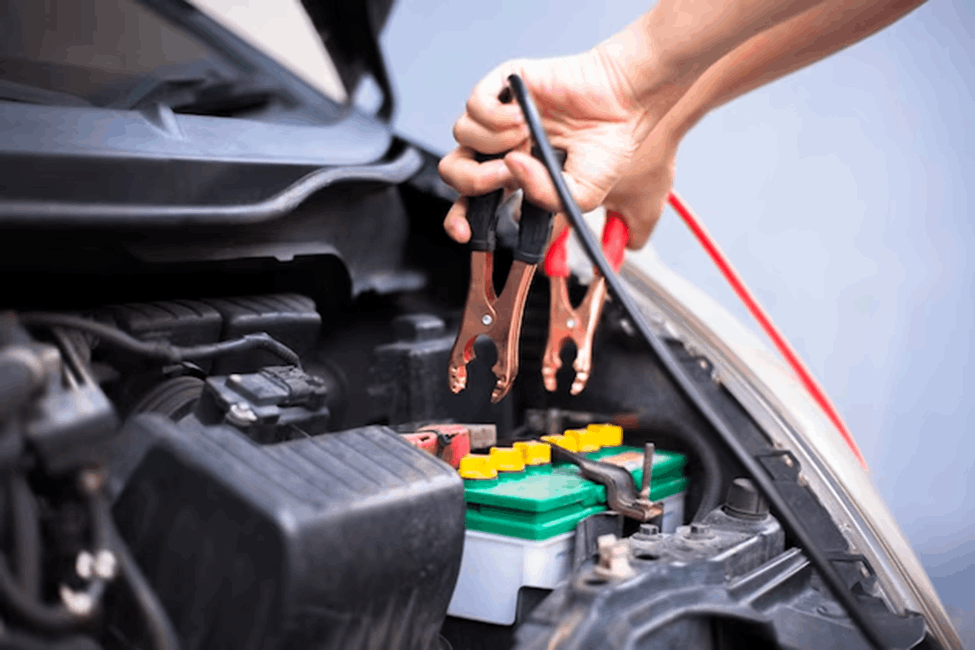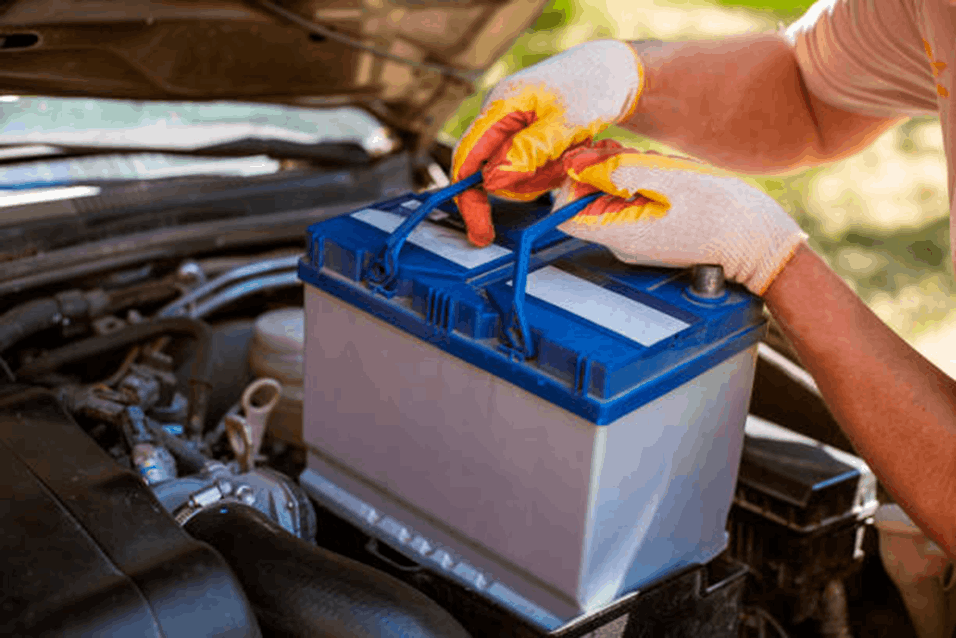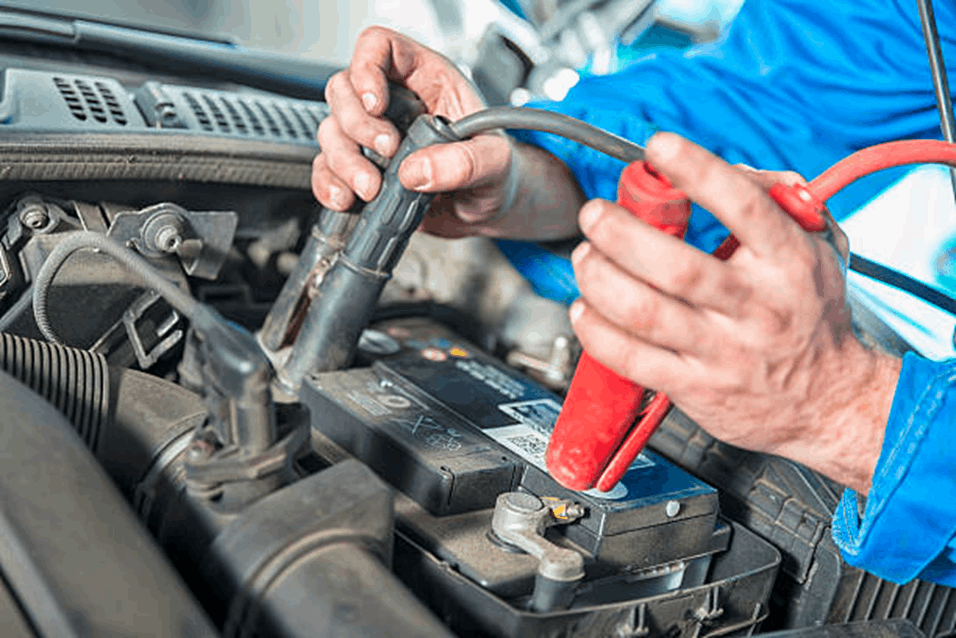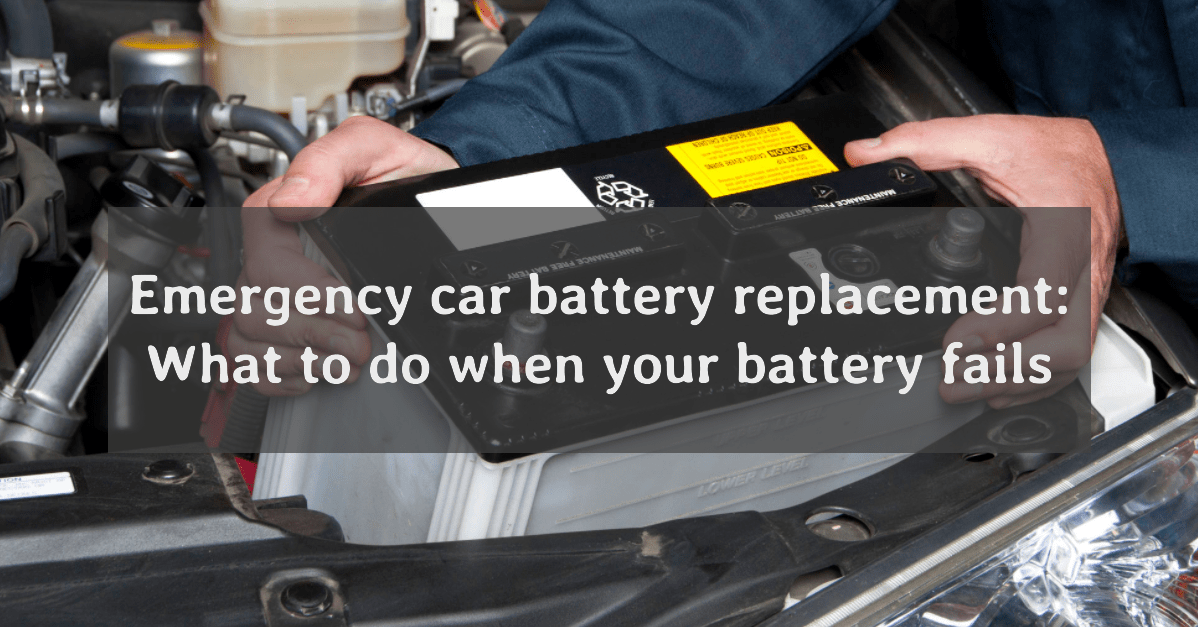As car enthusiasts, we understand the significance of a car battery in keeping our vehicles running smoothly. However, car battery failure is an inevitable reality that can leave us stranded at the most inconvenient times. This blog aims to shed light on the importance of a car battery, common reasons for battery failure, and, most importantly, equipping you with the knowledge to handle battery emergencies effectively.
By the end of this guide, you’ll be well-prepared to tackle unexpected battery incidents with confidence, ensuring your driving experiences remain hassle-free. Let’s dive in and become savvy car owners who know what to do when faced with a failing battery!
Signs of a Failing Battery

When your car battery is not working properly, there are some clear signs to look out for. Understanding these signs can help you identify a failing battery before it becomes a big problem.
Here are some simple things to watch out for:
Dim Headlights and Interior Lights
If you notice that your car’s headlights and interior lights are not shining as brightly as they used to, it could be a sign of a weakening battery. Dim lights might mean the battery is losing its power and needs attention.
Slow Engine Cranking or Difficulty Starting the Car
When you try to start your car, and it takes longer than usual to crank, or you hear a sluggish sound, it could be a sign of a weak battery. Starting problems might indicate that the battery is struggling to provide the necessary power to start the engine.
Strange Noises or Clicking Sounds When Trying to Start the Car
If you hear weird noises, like clicking sounds, when you turn the key to start your car, it might be a sign of a low battery. These sounds often mean the battery is not providing enough power to engage the starter.
Electrical Issues and Warning Lights on the Dashboard
A failing battery can cause various electrical problems in your car. You might see warning lights on the dashboard, like the battery light or the check engine light. These lights are essential indicators that something is not right with the battery or the car’s electrical system.
Safety Precautions

Dealing with a car battery can be hazardous, so it’s essential to take some safety precautions to protect yourself and others. Here are some simple safety tips to follow:
Park Your Car in a Safe Location
If you suspect a battery issue while driving, try to find a safe spot to pull over and park your car away from traffic. This way, you can avoid accidents and work on the battery safely.
Turn Off the Engine and All Electrical Devices
Before attempting any battery-related tasks, turn off the engine and all electrical devices like lights, radio, and air conditioning. This step helps reduce the risk of electric shock or short circuits.
Use Hazard Lights or Warning Triangles to Alert Other Drivers
If you’re stopped on the side of the road, switch on your hazard lights or place warning triangles behind your car to warn other drivers of your presence and avoid potential accidents.
Wear Safety Gloves and Goggles When Handling the Battery
When working with the battery, wear safety gloves and goggles to protect your hands and eyes from any potential chemical spills or accidents.
By keeping an eye on the signs of a failing battery and following these simple safety precautions, you can handle battery-related issues responsibly and ensure your driving experience remains safe and trouble-free.
Basic Tools and Equipment Needed

When it comes to replacing a battery, you’ll need some basic tools to get the job done. Here are the essential ones you’ll need:
- Screwdriver: This tool helps you remove screws that hold the battery in place. Make sure to choose the right size that fits the screws snugly.
- Pliers: Pliers come in handy for gripping and bending small parts when needed during the replacement process.
- Wrench: If your battery is held in place with nuts or bolts, a wrench will help you loosen and tighten them securely.
- Battery Terminal Cleaner: This is a special tool used to clean the battery terminals, ensuring a good connection with the new battery.
Safety Equipment to Have on Hand
Safety should always be a top priority when dealing with batteries. Having the right safety equipment will protect you from potential hazards. Here’s what you need:
- Safety Gloves: Wear sturdy gloves to shield your hands from harmful chemicals and prevent accidental cuts.
- Safety Goggles: Protect your eyes from any splashes or debris that may occur during the battery replacement.
- Fire Extinguisher: Keep a fire extinguisher nearby in case of any accidental fires that might happen during the process.
- Safety Apron or Clothing: Wearing protective clothing can prevent battery acid or chemicals from damaging your clothes or skin.
Step-by-Step Guide to Replacing the Battery

Replacing a car battery might seem daunting, but don’t worry! Just follow these simple steps, and you’ll be able to do it yourself:
Step 1: Open the Car Hood and Locate the Battery
Pop the car hood open by pulling the lever inside the car, usually located near the driver’s seat. Once the hood is open, look for the battery. It’s usually a rectangular box with two cables connected to it.
Step 2: Identify the Positive and Negative Terminals
The battery will have two terminals: a positive (+) and a negative (-). They are usually marked with red and black plastic covers.
Take a close look at the terminals and make sure you know which is which. The positive terminal may have a “+,” and the negative terminal may have a “-.”
Step 3: Disconnect the Battery Cables
Before touching anything, it’s essential to ensure the car is turned off. Turn off the engine, lights, and any electrical devices. Starting with the negative terminal, use a wrench to loosen the nut that holds the cable in place. Once loose, gently wiggle and pull the cable off the terminal. Remember, negative first!
Repeat the process for the positive terminal, using the wrench to loosen the nut and then removing the cable from the positive terminal.
Step 4: Remove the Old Battery from the Car
Look for a bracket or clamp that holds the battery in place. Use a screwdriver or a wrench to remove the bracket. Carefully lift the old battery out of the battery tray and place it on the ground. Be cautious, as car batteries can be heavy.
Step 5: Clean the Battery Tray and Terminal Clamps
Inspect the battery tray for any dirt, corrosion, or debris. Clean it using a mixture of baking soda and water to neutralize any battery acid residue.
Check the terminal clamps for corrosion or rust. If there’s any, clean them with a wire brush until they are shiny.
Step 6: Install the New Battery and Secure It Properly
Take the new battery and place it into the battery tray in the same orientation as the old one. Use the bracket or clamp to secure the battery in place. Make sure it’s snug and won’t move around.
Step 7: Reconnect the Battery Cables
Start with the positive terminal. Slide the cable back onto the positive terminal and tighten the nut with a wrench.
Next, do the same for the negative terminal. Slide the cable back onto the negative terminal and tighten the nut securely.
Step 8: Double-Check All Connections
Ensure all connections are tight and secure. Wiggle the battery a little to make sure it doesn’t move or rattle.
Check that there are no loose tools or items near the battery or engine area.
Step 9: Close the Car Hood and Check if the Car Starts
Close the car hood carefully. Now, it’s time to test the new battery. Turn on the car and check if it starts without any issues.
What to Do if the Car Doesn’t Start
Sometimes, cars might not start, and it can be frustrating. Here are simple things you can check before calling for help:
Make sure the battery is connected properly and not damaged. You can try jump-starting the car with cables if the battery is weak. Look at the fuel level. Maybe the gas tank is empty or very low. Fill it up with gas if needed.
Then, check the spark plugs. If they are dirty or worn out, the car may not start. You can clean or replace them. Fuses protect the car’s electrical system. If one is blown, it can cause problems. So make sure to replace any blown fuses.
If you hear unusual sounds when you try to start the car, it might indicate a problem that needs a mechanic’s help.
If you tried the above tips and your car still won’t start, don’t worry. It’s time to ask a professional mechanic for help. They have the expertise and tools to find the real issue and fix it.
Battery Disposal and Recycling

When your car battery becomes old and unusable, it’s essential to dispose of it safely. Don’t throw it in the trash. Car batteries contain harmful chemicals that can harm the environment if not disposed of properly.
Many auto shops and recycling centers accept old car batteries for proper recycling. They know how to handle and recycle them safely. Check local disposal rules. Some places have specific rules for battery disposal. Check with your local authorities to know the right way to get rid of it.
Recycling old car batteries is beneficial for several reasons. It keeps harmful chemicals from leaking into the soil and water, preventing pollution. It also allows valuable materials, like lead and plastic, to be reused instead of mining for new resources.
Lastly, proper recycling ensures that batteries don’t end up in landfills, reducing waste and making the planet cleaner.
Preventive Maintenance Tips
- Regularly check the battery’s condition and connections: It’s important to keep an eye on your car’s battery to make sure it stays in good shape. Check if the battery looks okay, and see if the wires connecting it are not loose or damaged. This helps the battery work better and last longer.
- Keep the battery clean and free from corrosion: Keeping the battery clean is easy and helpful. You can use a cloth to wipe off any dirt or grease on it. Also, check for any white or greenish stuff on the battery terminals – that’s corrosion. If you see any, clean it gently with a mixture of baking soda and water.
- Test the battery’s voltage and charge levels: To know if your battery is doing well, you can check its voltage and charge levels. You can do this with a simple tool called a voltmeter. If the voltage is too low, it might be time to charge or replace the battery.
- Extreme weather considerations and battery life: Extreme weather can affect your battery. In very cold weather, the battery might have a hard time starting your car. If it’s too hot, the battery can wear out faster. To help your battery last longer, try to park your car in the shade during hot days, and if it’s super cold, you might want to use a block heater to warm up the engine before starting the car.
Conclusion
In conclusion, experiencing a car battery failure can be a stressful and inconvenient situation, but being prepared and knowing what to do can make all the difference. By following the steps outlined in this blog, you can effectively handle an emergency car battery replacement and get back on the road safely.


